How Katukov turned the Germans to Prokhorovka
Tank the battles in July 1943 on the Kursk Bulge are attributed mainly to the counterattack of the 5th Guards Tank Army of Rotmistrov on July 12 near Prokhorovka, ignoring the facts of stubborn tank battles of the 1st Tank Army of Katukov, which were much more important in defensive battles on July 5-12 on the southern flank of the Kursk Bulge.
State of the parties
The Germans delivered the main blow to the north from Belgorod and Tomarovka along the highway to Oboyan (70 km north of Belgorod). This was also explained by the fact that before Oboyan the road to the north was blocked by a swampy flood plain of the Psel River 1,5-2 km wide, which tanks could force only along the highway and the bridge across the river.
The positions of the Red Army were well fortified, three defensive lines were equipped to a depth of 45 km, three more lines extended to a depth of 250-300 km. As a child, in the mid-50s, I had to see an anti-tank moat 110 km north of Belgorod near Medvenka; at that time it was not yet buried. Despite such powerful engineering equipment of the area, the Germans managed to break through them and take the third defensive line near Verkhopeni. The stubborn battles of Katukov’s troops stopped them at this turn.
In this direction, the Germans opposed the 1st Panzer Army and units of the 6th Guards Army. From July 6 to July 15, 1943, Katukov led the operations of four tank and one mechanized corps, five rifle divisions, three separate tank brigades, three separate tank regiments and ten anti-tank regiments, in total there were about 930 tanks.
Katukov’s army was opposed by the German group, which included two infantry divisions, the 48th Panzer Corps, the Dead Head, Adolf Hitler, Reich and Greater Germany tank divisions, reinforced by two battalions of Tiger heavy tanks (about 200 tanks ) and two battalions of Panther tanks (196 tanks and 4 ARVs). In total, about 1200 tanks were concentrated in this direction.
The defensive phase of the battle
On the first day of the battle, July 5, the troops of Katukov’s army were in the area of concentration behind the second line of defensive lines and did not participate in battles. German troops broke through the first line of defense and by the end of the day reached the second line. Front commander Vatutin ordered Katukov to launch on July 6 an army counter-attack on the erupted enemy in the direction of Belgorod.
Katukov believed that such a dangerous counterattack on the enemy’s advancing tank armada could lead to unjustified losses of the tank army. Stalin, learning about the disagreements in the command, called Katukov and asked his opinion. Katukov outlined the risks of a counteroffensive and, to the question of Stalin, what he was suggesting, answered "use tanks to fire from a place, burying them in the ground or ambush", then "we could let the enemy’s vehicles reach three hundred meters and destroy them with aimed fire ", And Stalin canceled the counterattack.
From Katukov’s point of view, he was right, not putting tanks under deadly fire, he was exhausting the enemy’s forces, but Vatutin saw that two German tank corps, advancing on both sides of the Oboyan highway, planned to close the ring around the rifle regiments and eliminate them, so the German troops west of the highway moved across the offensive line from west to east and fell under the flank attack of Katukov, which could disrupt the Germans' plans and inflict serious losses on them.
As a result, the counterattack did not take place on July 6, the enemy seized the initiative, and Katukov’s bet on passive actions was justified only partially. The Germans, introducing large tank forces, slowly but surely grind the troops of the 6th Guards Army, pushed them to the second army defensive line. At the village of Cherkassky, the 67th Guards Rifle Division could not provide significant resistance to the mass of tanks, and by noon the 11th Panzer Division and Great Germany were behind the Soviet units between the first and second lines of defense. The divisions gave the order to retreat, but it was too late, and by the end of the day the Germans closed the ring. There were three rifle regiments in the “cauldron”; not everyone managed to escape from the environment under cover of darkness.
Towards the end of the day, the enemy entered the position of the 1st Panzer Army and, having met with a powerful and organized rebuff at this line, was forced to change the direction of the main attack during the day and move it east of the Belgorod-Oboyan highway towards Prokhorovka. As a result, on July 6, the enemy advanced to a depth of 11 km, but suffered heavy losses in tanks and infantry.
On the morning of July 7, the Germans launched an offensive against the 3rd mechanized corps and the 31st tank corps, organizing an attack of 300 tanks with massive support aviation, broke through the defense of the mechanized corps and forced to retreat in the direction of Syrtsevo. To eliminate the Germans' breakthrough, three tank brigades were deployed to the Verkhopenye area with the task of preventing the advance of the enemy in the north.
Under pressure from the superior forces of the two German tank divisions, Dead Head and Adolf Hitler, by the end of the day, the 31st Panzer Corps had moved to the Malye Mayachki line. The enemy advanced 4-5 km and wedged out to the third army defensive line. The Germans' attempt to expand the wedge in the northeast direction was not successful. As a result of heavy fighting, the left flank of the 1st Panzer Army turned out to be bypassed and driven back to the north-west, the location of the troops was flanking in relation to the enemy and threatened the German wedge at its base, but the Germans continued to rush to Oboyan.
Early in the morning of July 8, the Germans, having entered into battle up to 200 tanks, continued their successful offensive on Syrtsevo and along Oboyan highway. Suffering heavy losses, the 6th Panzer Corps went over the Pena River and took up defense there, and the 3rd mechanized corps also retreated along the highway, restraining enemy attacks. The enemy’s attempt to force the Psel river at its mouth in the Prokhorovka area was unsuccessful, and the German advance eastward in the direction of Prokhorovka was thwarted.
By the end of the day on July 8, the Germans had advanced 8 km, their progress stopped there, their attempts to advance westward at the position of the 1st Panzer Army also began to weaken. They failed to break through the front in this direction.
On the morning of July 9, the Germans entered into battle a fresh tank division to take control of the Syrtsevo, Verkhnopenye area, however, the 6th Panzer Corps repelled all enemy attempts to cross the Pena River and firmly held its position. Having no success here, they launched an offensive against units of the 3rd mechanized corps. The advancing enemy tanks managed to crush the battle formations of the mechanized corps and create a threat to the right flank of the 31st Panzer Corps.
By the end of the day, a rather difficult situation was created on this site. The forces of the weakened 3rd mechanized corps and 31st tank corps were not enough to deter the enemy, and he could quite easily develop an offensive to the north and break through to Oboyan. To strengthen this direction, Vatutin transfers the 5th Stalingrad Panzer Corps under Katukov’s command in the evening, and he concentrates in the area of Zorinsky Dvor.
Given the difficult situation in connection with the Germans breaking through the third line of defense, the representative of the Headquarters on the Voronezh Front Vasilevsky suggested that Stavka transfer from the reserve Steppe Front to help the troops of the Voronezh Front the 5th Guards Tank Army of Rotmistrov. The Soviet command approved this decision on July 9, and the transfer of Rotmistrov’s army to Prokhorovka began, which was tasked with launching a counterattack on the enemy’s wedged tank units and forcing them to retreat to their original positions.
At dawn on July 10, the enemy concentrated up to 100 tanks in the area of Verkhnopenie and struck at the gap between the 6th tank and 3rd mechanized corps. After a fierce battle, he occupied a height of 243, but could not advance further. Nevertheless, having regrouped their forces, the Germans by the end of the day surrounded part of the disparate forces of the 6th Panzer Corps and went to its rear. As a result of heavy battles, the corps suffered heavy losses: by the end of July 10, only 35 tanks remained in its composition.
In the morning of July 11, dramatic events began for the 1st Panzer Army, the Germans launched an attack on the 6th Panzer Corps from three sides and surrounded it in the bend of the Pena River. With great difficulty, separate disparate units managed to break out of the encirclement, not everyone succeeded, the Germans later declared that they had captured about five thousand people.
Counterattack of two tank armies
At this stage, the defensive operation of the troops of the 1st Panzer Army ended, Vatutin even on the night of July 10-11 set Katukov to strike in the general direction to the southeast, capture Yakovlevo, Pokrovka and, together with the 5th Guards Tank Army, encircle the erupted mobile grouping with further development of success to the south and southwest.
At the same time, the commander of the XLVIII German Corps Knobelsdorf, having liquidated the "cauldron", with the remnants of the 6th Panzer Corps and receiving the support of the Commander of the 4th Panzer Army, Gotha, decided in the afternoon of July 12 to develop an offensive to the north on Oboyan from two sides of the Oboyan highway, he still had about 150 combat ready tanks.
As a result, on July 12, there were two offensives — the German troops and the troops of the 1st Panzer and 5th Guards Tank Armies. According to the plan of Vasilevsky and Vatutin, the frontal counterattack of two tank armies from the areas of Verkhnopenye and Prokhorovka in convergent directions to encircle the enemy was supposed to begin in the early morning, but this did not happen.
The counterattack of Rotmistrov’s army near Prokhorovka began at 8.30 am and, due to unsatisfactory preparation, did not achieve a result; moreover, it was not supported at a sufficient level by artillery and aircraft. The main reason for the failure was the capture by the Germans on July 11 of the territory from which the counterattack should be made. The two tank corps of Rotmistrov’s army had to advance in another place on a narrow section, sandwiched by the railway and floodplain of the Psel River, where even brigade battle formations could not deploy, the army entered the battle against the enemy’s well-prepared anti-tank defense and suffered terrible losses. Despite the courage and heroism of the Soviet tankmen, it was not possible to break through the German defense. In the afternoon, everything was already over, the counterattack of Rotmitsrov’s army choked, the Germans left the battlefield. Details about the Prokhorov battle are told here.
The counterattack of Katukov’s army did not start in the morning due to the tank’s unpreparedness to attack, only by noon the 5th Guards Stalingrad Panzer Corps and the 10th Panzer Corps went on the offensive, which was a major success. Soviet tanks penetrated deeply for 3-5 km in several directions at once into the German orders, preparing for the offensive, captured several villages and the German command post and squeezed out the Great Germany division.
Katukov’s counterattack was unexpected for the Germans, they were taken by surprise, and the German command began to take measures to curtail their offensive and withdraw troops from under attack. As a result, with a rather cautious action by the commanders of the Katukov army, the German offensive in the main direction on Oboyan was thwarted. A counterattack was delivered to the enemy’s weak spot and stopped his advance, but to break through and connect with Rotmistrov’s army was not destined.
After July 12, Hitler ordered the cessation of Operation Citadel, the positional battles were mainly fought on the southern flank of the Kursk Bulge, the Germans began to withdraw their troops to their original positions.
The irreparable losses of the 1st Panzer Army and assigned units from July 6 to 15 in the battles on the Kursk Bulge amounted to 513 tanks, and German losses in this direction, according to the American researcher Christopher Lorenz, amounted to 484 tanks and assault guns, including 266 Pz III and Pz IV, 131 Panther, 26 Tiger, 61 StuG and Marder.
Of interest is the use of Panther tanks against Katukov’s army. They were used by the Germans only in this sector of the front; they did not participate in the battles near Prokhorovka. The Germans were in a hurry to put this tank into the troops at the beginning of the Battle of Kursk, and it was "raw", had many shortcomings and design flaws in the engine, transmission and chassis, which they did not manage to eliminate. This led to frequent mechanical breakdowns and ignition of the engine and tank. At the same time, the tank had a powerful 75 mm long-barreled gun and good frontal protection, which Soviet tanks did not penetrate.
The Panther tanks suffered serious damage in the battles; they suffered significant losses from well-organized Soviet tank and artillery fire on tanks not on the forehead, but on the side of the tank. The design flaws of the tank, which were subsequently eliminated, also influenced the effectiveness of their use. At least the 1st Panzer Army “ground” a significant part of these new German tanks and limited the possibility of their use in subsequent German operations.
The undoubted success of Katukov was a good organization of defense during the German offensive, the disruption of the breakthrough of the German offensive on the main direction to Oboyan, which forced the German command to deviate east to the Prokhorovka region instead of attacking the north and disperse its forces.
Comparing the fighting of the 1st Panzer Army and the 5th Guards Tank Army on the Kursk Bulge, it is clear that Katukov, when fulfilling the assigned task, avoided frontal attacks on the enemy and was looking for ways to beat him, and Rotmistrov carried out the will of superior commanders about the frontal attack and carried significant losses in people and technology.
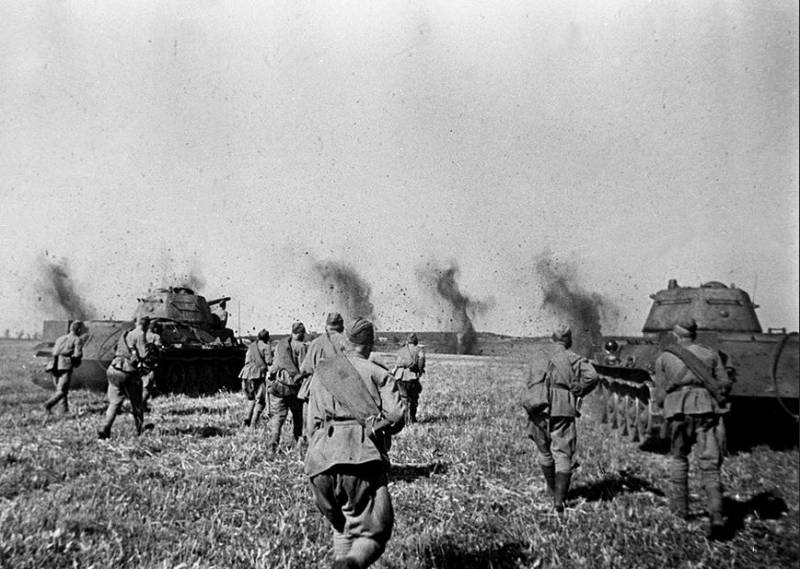
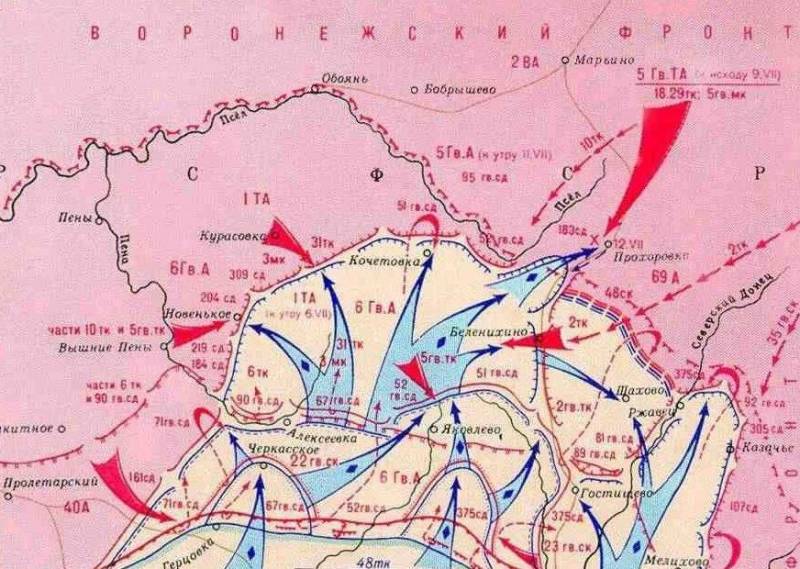
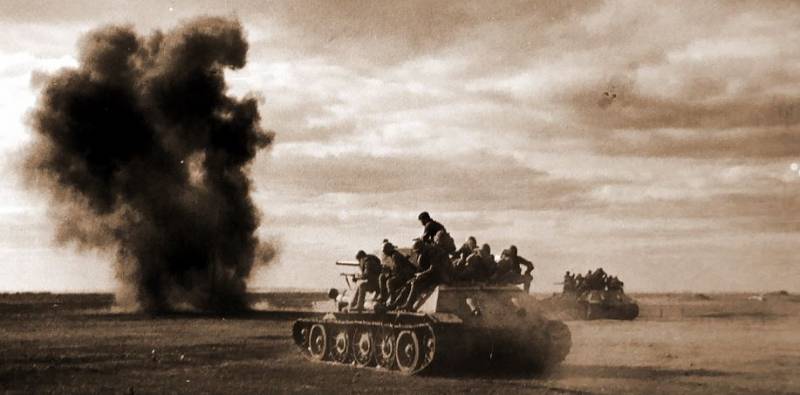
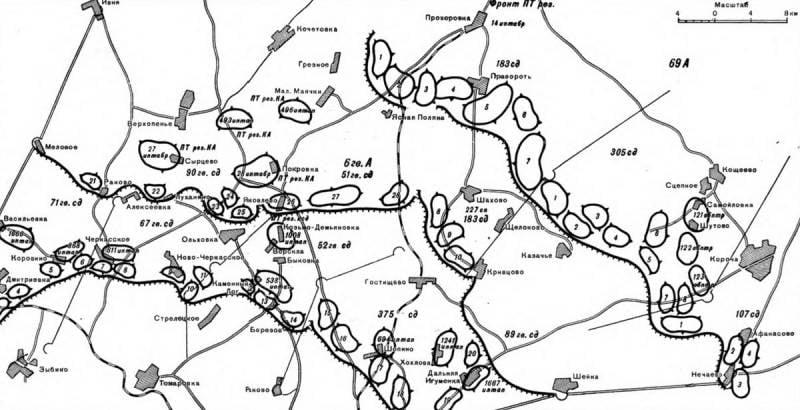
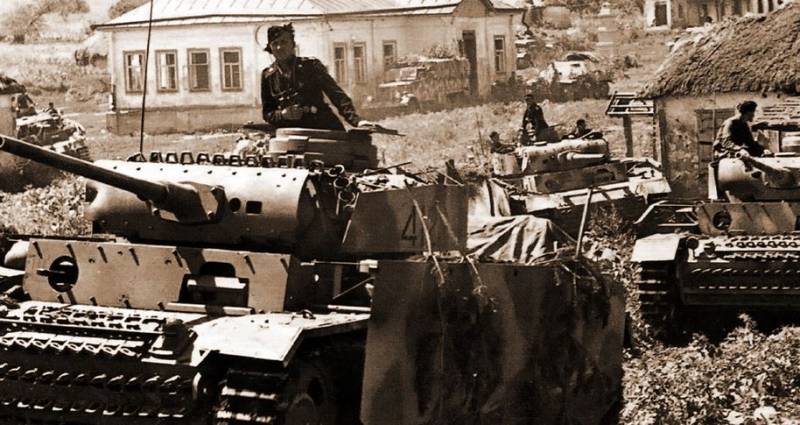
Information